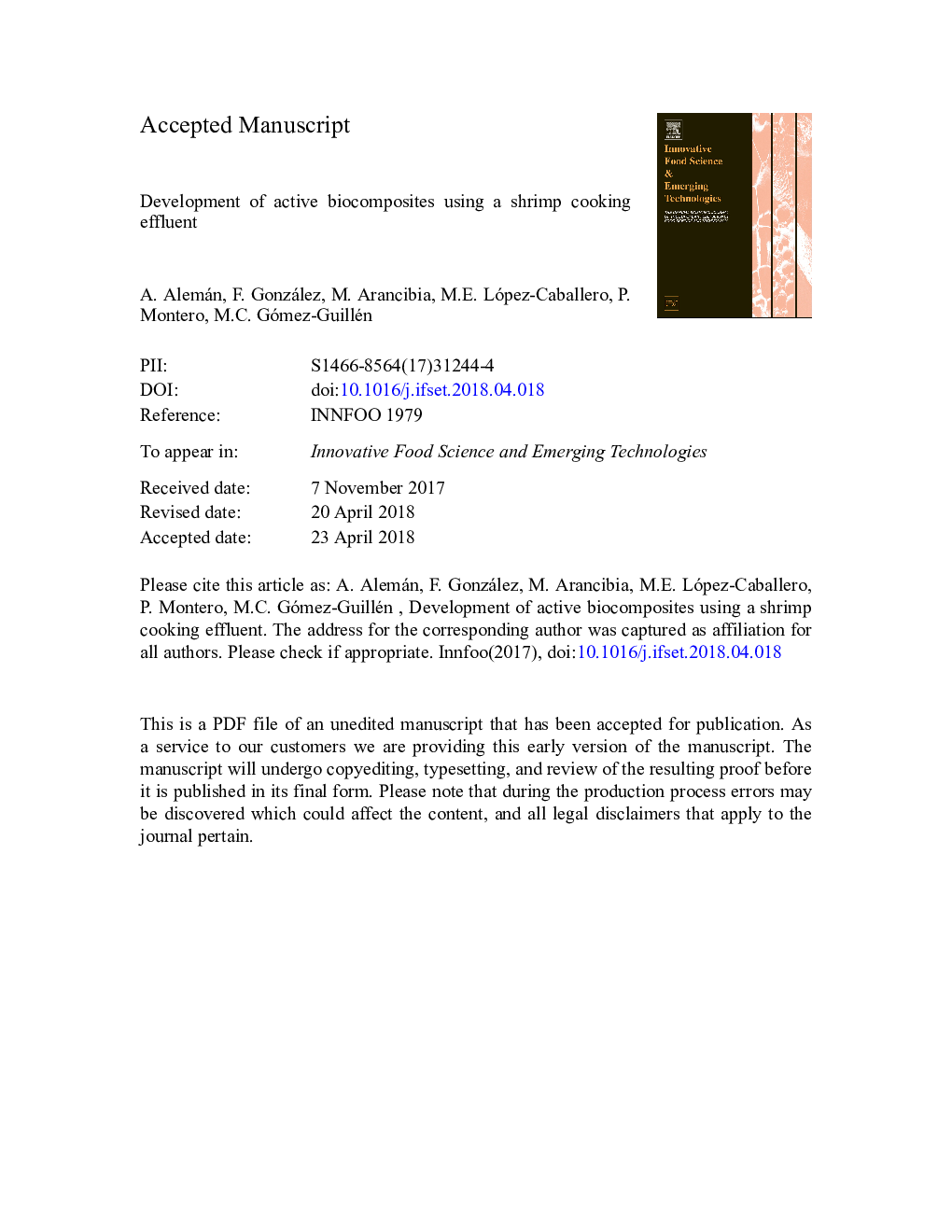| Article ID | Journal | Published Year | Pages | File Type |
|---|---|---|---|---|
| 8415638 | Innovative Food Science & Emerging Technologies | 2018 | 42 Pages |
Abstract
A functional microemulsified concentrate was obtained from an industrial shrimp cooking effluent by using a centrifugal separator, resulting in a new effluent with only 5% of dry matter. The shrimp concentrate (C) showed valuable properties for use as a bioactive ingredient, being rich in lipids (~16%) and proteins (~11% w/w), and exhibiting antioxidant (radical scavenging capacity and reducing power) and antimicrobial properties. Chitosan-gelatin (ChG) biocomposites with and without the shrimp concentrate were prepared and characterized. The incorporation of C provided film-forming dispersions (S-ChGC) and dried films (F-ChGC) with increased antioxidant and antimicrobial activity. The film microstructure changed with the incorporation of the concentrate, which caused an evident plasticizing effect and reduced the tensile strength. The resulting biocomposites containing the shrimp cooking concentrate showed great potential for use in food applications (as food preservation or food design), medical devices or for cosmetic purposes, as wound dressing or film matrix for application on mucous membranes and epithelia with different functionalities.
Related Topics
Life Sciences
Agricultural and Biological Sciences
Food Science
Authors
A. Alemán, F. González, M. Arancibia, M.E. López-Caballero, P. Montero, M.C. Gómez-Guillén,
